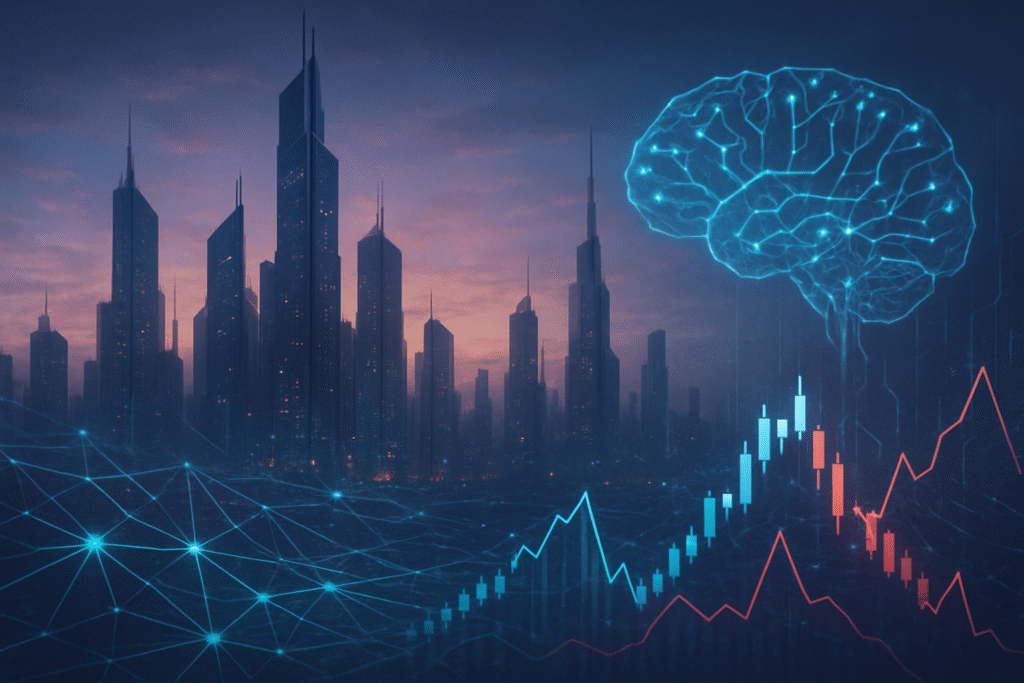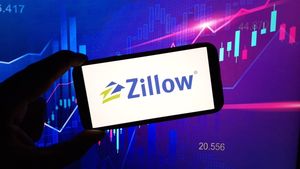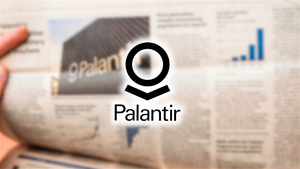
The artificial intelligence sector is currently experiencing an unprecedented surge in investment and valuation, reminiscent of past technological revolutions. However, this fervent enthusiasm has ignited a heated debate among market leaders and financial institutions: are we witnessing a genuine industrial revolution, or is an AI investment bubble rapidly inflating, poised for a potentially devastating burst? This question carries profound implications for global financial stability, investor confidence, and the future trajectory of technological innovation.
As of October 9, 2025, the discussion is not merely academic. It's a critical assessment of market sustainability, with prominent voices like the International Monetary Fund (IMF), JPMorgan Chase (NYSE: JPM), and even industry titan Nvidia (NASDAQ: NVDA) weighing in with contrasting, yet equally compelling, perspectives. The immediate significance of this ongoing debate lies in its potential to shape investment strategies, regulatory oversight, and the broader economic outlook for years to come.
Conflicting Forecasts: The IMF, JPMorgan, and Nvidia on the Brink of a Bubble?
The core of the AI investment bubble debate centers on the sustainability of current valuations and the potential for a market correction. Warnings from venerable financial institutions clash with the unwavering optimism of key industry players, creating a complex landscape for investors to navigate.
The International Monetary Fund (IMF), in collaboration with the Bank of England, has expressed significant concern, suggesting that equity market valuations, particularly for AI-centric companies, appear "stretched." Kristalina Georgieva, the IMF Managing Director, has drawn stark parallels between the current AI-driven market surge and the dot-com bubble of the late 1990s, noting that valuations are approaching—and in some cases exceeding—those observed 25 years ago. The IMF's primary concern is that a sharp market correction could lead to tighter global financial conditions, subsequently stifling world economic growth and exposing vulnerabilities, especially in developing economies. This perspective highlights a potential systemic risk, emphasizing the need for prudent assessment by policymakers and investors alike.
Adding to the cautionary chorus, Jamie Dimon, the CEO of JPMorgan Chase (NYSE: JPM), has voiced considerable apprehension. Dimon, while acknowledging AI's transformative potential, stated he is "far more worried than others" about an AI-driven stock market bubble, predicting a serious market correction could occur within the next six months to two years. He cautioned that despite AI's ultimate payoff, "most people involved won't do well," and a significant portion of current AI investments will "probably be lost." Dimon also cited broader macroeconomic risks, including geopolitical volatility and governmental fiscal strains, as contributing factors to heightened market uncertainty. His specific timeframe and position as head of America's largest bank lend considerable weight to his warnings, urging investors to scrutinize their AI exposures.
In stark contrast, Jensen Huang, CEO of Nvidia (NASDAQ: NVDA), a company at the epicenter of the AI hardware boom, remains profoundly optimistic. Huang largely dismisses fears of an investment bubble, framing the current market dynamics as an "AI race" and a "new industrial revolution." He points to Nvidia's robust financial performance and long-term growth strategies as evidence of sustainable demand. Huang projects a massive $3 to $4 trillion global AI infrastructure buildout by 2030, driven by what he describes as "exponential growth" in AI computing demand. Nvidia's strategic investments in other prominent AI players, such as OpenAI and xAI, further underscore its confidence in the sector's enduring trajectory. This bullish outlook, coming from a critical enabler of the AI revolution, significantly influences continued investment and development, even as it contributes to the divergence of expert opinions.
The immediate significance of this debate is multifaceted. It contributes to heightened market volatility as investors grapple with conflicting signals. The frequent comparisons to the dot-com era serve as a powerful cautionary tale, highlighting the risks of speculative excess and potential for significant investor losses. Furthermore, the substantial concentration of market capitalization in a few "Magnificent Seven" tech giants, particularly those heavily involved in AI, makes the overall market susceptible to significant downturns if these companies experience a correction. There are also growing worries about "circular financing" models, where AI companies invest in each other, potentially inflating valuations and creating an inherently fragile ecosystem. Warnings from leaders like Dimon and Goldman Sachs (NYSE: GS) CEO David Solomon suggest that a substantial amount of capital poured into the AI sector may not yield expected returns, potentially leading to significant financial losses for many investors, with some research indicating a high percentage of companies currently seeing zero return on their generative AI investments.
The Shifting Sands: AI Companies, Tech Giants, and Startups Brace for Impact
The specter of an AI investment bubble looms large over the technology landscape, promising a significant recalibration of fortunes for pure-play AI companies, established tech giants, and nascent startups alike. The current environment, characterized by soaring valuations and aggressive capital deployment, is poised for a potential "shakeout" that will redefine competitive advantages and market positioning.
Pure-play AI companies, particularly those developing foundational models like large language models (LLMs) and sophisticated AI agents, have seen their valuations skyrocket. Firms such as OpenAI and Anthropic have experienced exponential growth in valuation, often without yet achieving consistent profitability. A market correction would severely test these inflated figures, forcing a drastic reassessment, especially for companies lacking clear, robust business models or demonstrable pathways to profitability. Many are currently operating at significant annual losses, and a downturn could lead to widespread consolidation, acquisitions, or even collapse for those built on purely speculative foundations.
For the tech giants—the "Magnificent Seven" including Microsoft (NASDAQ: MSFT), Amazon (NASDAQ: AMZN), Alphabet (NASDAQ: GOOGL), Meta Platforms (NASDAQ: META), Apple (NASDAQ: AAPL), Nvidia (NASDAQ: NVDA), and Tesla (NASDAQ: TSLA)—the impact would be multifaceted. As the primary drivers of the AI boom, these companies have invested hundreds of billions in AI infrastructure and research. While their diversified revenue streams and strong earnings have, to some extent, supported their elevated valuations, a correction would still resonate profoundly. Chipmakers like Nvidia (NASDAQ: NVDA) and Advanced Micro Devices (NASDAQ: AMD), key enablers of the AI revolution, face scrutiny over "circular business relationships" where they invest in AI startups that subsequently purchase their chips, potentially inflating revenue. Cloud providers such as Amazon Web Services (AWS) (NASDAQ: AMZN), Microsoft Azure (NASDAQ: MSFT), and Google Cloud (NASDAQ: GOOGL) have poured massive capital into AI data centers; a correction might lead to a slowdown in planned expenditure, potentially improving margins but also raising questions about the long-term returns on these colossal investments. Diversified tech giants with robust free cash flow and broad market reach are generally better positioned to weather a downturn, potentially acquiring undervalued AI assets.
AI startups, often fueled by venture capital and corporate giants, are particularly vulnerable. The current environment has fostered a proliferation of AI "unicorns" (companies valued at $1 billion or more), many with unproven business models. A market correction would inevitably lead to a tightening of venture funding, forcing many weaker startups into consolidation or outright failure. Valuations would shift dramatically from speculative hype to tangible returns, demanding clear revenue streams, defensible market positions, and strong unit economics. Investors will demand proof of product-market fit and sustainable growth, moving away from companies valued solely on future promise.
In this environment, companies with strong fundamentals and clear monetization paths stand to benefit most, demonstrating real-world applications and consistent profitability. Established tech giants with diversified portfolios can leverage their extensive resources to absorb shocks and strategically acquire innovative but struggling AI ventures. Companies providing essential "picks and shovels" for the AI buildout, especially those with strong technological moats like Nvidia's CUDA platform, could still fare well, albeit with more realistic valuations. Conversely, speculative AI startups, companies heavily reliant on "circular financing," and those slow to adapt or integrate AI effectively will face significant disruption. The market will pivot from an emphasis on building vast AI infrastructure to proving clear monetization paths and delivering measurable return on investment (ROI). This shift will favor companies that can effectively execute their AI strategies, integrate AI into core products, and demonstrate real business impact over those relying on narrative or experimental projects. Consolidation and M&A activity are expected to surge, while operational resilience, capital discipline, and a focus on niche, high-value enterprise solutions will become paramount for survival and long-term success.
Beyond the Hype: The Wider Significance in the AI Landscape
The ongoing AI investment bubble debate is more than just a financial discussion; it represents a critical juncture for the broader AI landscape, influencing economic stability, resource allocation, and the very trajectory of technological innovation. This discussion is deeply embedded in the current AI "supercycle," a period of intense investment and rapid advancement fueled by the transformative potential of artificial intelligence across virtually every industry.
The debate's wider significance stems from AI's outsized influence on the global economy. As of mid-2025, AI spending is observed to be a primary driver of economic growth, with some estimates attributing a significant portion of GDP growth to AI in major economies. AI-related stocks have disproportionately contributed to benchmark index returns, earnings growth, and capital spending since the advent of generative AI tools like ChatGPT in late 2022. This enormous leverage means that any significant correction in AI valuations could have profound ripple effects, extending far beyond the tech sector to impact global economic growth and financial markets. The Bank of England has explicitly warned of a "sudden correction" due to these stretched valuations, underscoring the systemic risk.
Concerns about economic instability are paramount. A burst AI bubble could trigger a sharp market correction, leading to tighter financial conditions globally and a significant drag on economic growth, potentially culminating in a recession. The high concentration of AI-related stocks in major indexes means that a downturn could severely impact broader investor portfolios, including pension and retirement funds. Furthermore, the immense demand for computing power required to train and run advanced AI models is creating significant resource strains, including massive electricity and water consumption for data centers, and a scramble for critical minerals. This demand raises environmental concerns, intensifies competition for resources, and could even spark geopolitical tensions.
The debate also highlights a tension between genuine innovation and speculative excess. While robust investment can accelerate groundbreaking research and development, unchecked speculation risks diverting capital and talent towards unproven or unsustainable ventures. If the lofty expectations for AI's immediate impact fail to materialize into widespread, tangible returns, investor confidence could erode, potentially hindering the development of genuinely impactful applications. There are also growing ethical and regulatory considerations; a market correction, particularly if it causes societal disruption, could prompt policymakers to implement stricter safeguards or ethical guidelines for AI development and investment.
Historically, the current situation draws frequent comparisons to the dot-com bubble of the late 1990s and early 2000s. Similarities include astronomical valuations for companies with limited profitability, an investment frenzy driven by a "fear of missing out" (FOMO), and a high concentration of market capitalization in a few tech giants. Some analysts even suggest the current AI bubble could be significantly larger than the dot-com era. However, a crucial distinction often made by institutions like Goldman Sachs (NYSE: GS) is that today's leading AI players (e.g., Microsoft (NASDAQ: MSFT), Alphabet (NASDAQ: GOOGL), Amazon (NASDAQ: AMZN), Nvidia (NASDAQ: NVDA)) possess strong balance sheets, robust cash flows, and highly profitable legacy businesses, unlike many of the unprofitable startups during the dot-com bust. Other comparisons include the 2008 global real estate bubble, with concerns about big tech's increasing reliance on debt for AI infrastructure mirroring the debt preceding that crisis, and the telecom boom of the 1990s in terms of rapid infrastructure investment.
Amazon (NASDAQ: AMZN) founder Jeff Bezos has offered a nuanced perspective, suggesting that the current AI phenomenon might be an "industrial bubble" rather than a purely financial one. In an industrial bubble, even if valuations correct, the underlying technological advancements and infrastructure investments can leave behind valuable, transformative assets, much like the fiber optic networks laid during the internet bubble eventually enabled today's digital economy. This perspective suggests that while speculative ventures may fail, the fundamental progress in AI and the buildout of its supporting infrastructure could still yield profound long-term societal benefits, mitigating the severity of a "bust" compared to purely financial bubbles where capital is largely destroyed. Ultimately, how this debate resolves will shape not only financial markets but also the pace and direction of AI innovation, its integration into the global economy, and the allocation of crucial resources worldwide.
The Road Ahead: Navigating AI's Future Amidst Uncertainty
The trajectory of AI investment and development in the coming years is poised to be a complex interplay of continued innovation, market corrections, and the challenging work of translating speculative potential into tangible value. As the debate over an AI investment bubble intensifies, experts offer varied outlooks for both the near and long term.
In the near term, many analysts and market leaders anticipate a significant recalibration. Figures like Amazon (NASDAQ: AMZN) founder Jeff Bezos, while optimistic about AI's long-term impact, have characterized the current surge as an "industrial bubble," acknowledging the potential for market overheating due to the sheer volume of capital flowing into numerous, often unproven, startups. OpenAI CEO Sam Altman has similarly described the market as "frothy." Predictions of a potential market burst or "reset" are emerging, with some suggesting a correction as early as late 2025. This could be triggered by disappointing returns on AI investments, a high failure rate among pilot projects (an MIT study noted 95% of generative AI pilot projects failing to increase revenue), and a broader market recognition of excessive valuations. Goldman Sachs (NYSE: GS) CEO David Solomon anticipates a "reset" in AI-driven stock valuations, warning that a significant portion of deployed capital may not deliver expected returns. Some even contend that the current AI bubble surpasses the scale of the dot-com bubble and the 2008 real estate crisis, raising concerns about a severe economic downturn.
Despite these near-term cautions, the long-term outlook for AI remains overwhelmingly positive among most industry leaders. The consensus is that AI's underlying technological advancement is unstoppable, regardless of market volatility. Global AI investments are projected to exceed $2.8 trillion by 2029, with major tech companies continuing to pour hundreds of billions into building massive data centers and acquiring advanced chips. Jeff Bezos, while acknowledging the "industrial bubble," believes the intense competition and heavy investment will ultimately yield "gigantic" benefits for society, even if many individual projects fail. Deutsche Bank (NYSE: DB) advises a long-term holding strategy, emphasizing the difficulty of timing market corrections in the face of this "capital wave." Forrester Research's Bernhard Schaffrik predicts that while corrections may occur, generative AI is too popular to disappear, and "competent artificial general intelligence" could emerge between 2026 and 2030.
The horizon for potential applications and use cases is vast and transformative, spanning numerous industries:
- Healthcare: AI is set to revolutionize diagnosis, drug discovery, and personalized patient care.
- Automation and Robotics: AI-powered robots will perform complex manufacturing tasks, streamline logistics, and enhance customer service.
- Natural Language Processing (NLP) and Computer Vision: These core AI technologies will advance autonomous vehicles, medical diagnostics, and sophisticated translation tools.
- Multimodal AI: Integrating text, voice, images, and video, this promises more intuitive interactions and advanced virtual assistants.
- Financial Services: AI will enhance fraud detection, credit risk assessment, and personalized investment recommendations.
- Education: AI can customize learning experiences and automate administrative tasks.
- Environmental Monitoring and Conservation: AI models, utilizing widespread sensors, will predict and prevent ecological threats and aid in conservation efforts.
- Auto-ML and Cloud-based AI: These platforms will become increasingly user-friendly and accessible, democratizing AI development.
However, several significant challenges must be addressed for AI to reach its full potential and for investments to yield sustainable returns. The high costs associated with talent acquisition, advanced hardware, software, and ongoing maintenance remain a major hurdle. Data quality and scarcity are persistent obstacles, as obtaining high-quality, relevant, and diverse datasets for training effective models remains difficult. The computational expense and energy consumption of deep learning models necessitate a focus on "green AI"—more efficient systems that operate with less power. The "black box" problem of AI, where algorithms lack transparency and explainability, erodes trust, especially in critical applications. Ethical concerns regarding bias, privacy, and accountability are paramount and require careful navigation. Finally, the challenge of replacing outdated infrastructure and integrating new AI systems into existing workflows, coupled with a significant talent gap, will continue to demand strategic attention and investment.
Expert predictions on what happens next range from immediate market corrections to a sustained, transformative AI era. While some anticipate a "drawdown" within the next 12-24 months, driven by unmet expectations and overvalued companies, others, like Jeff Bezos, believe that even if it's an "industrial bubble," the resulting infrastructure will create a lasting legacy. Most experts concur that AI technology is here to stay and will profoundly impact various sectors. The immediate future may see market volatility and corrections as the hype meets reality, but the long-term trajectory points towards continued, transformative development and deployment of AI applications, provided key challenges related to cost, data, efficiency, and ethics are effectively addressed. There's also a growing interest in moving towards smaller, more efficient AI models that can approximate the performance of massive ones, making AI more accessible and deployable.
The AI Investment Conundrum: A Comprehensive Wrap-Up
The fervent debate surrounding a potential AI investment bubble encapsulates the profound hopes and inherent risks associated with a truly transformative technology. As of October 9, 2025, the market is grappling with unprecedented valuations, massive capital expenditures, and conflicting expert opinions, making it one of the most significant economic discussions of our time.
Key Takeaways:
On one side, proponents of an AI investment bubble point to several alarming indicators. Valuations for many AI companies remain extraordinarily high, often with limited proven revenue models or profitability. For instance, some analyses suggest AI companies need to generate $40 billion in annual revenue to justify current investments, while actual output hovers around $15-$20 billion. The scale of capital expenditure by tech giants on AI infrastructure, including data centers and advanced chips, is staggering, with estimates suggesting $2 trillion from 2025 to 2028, much of it financed through new debt. Deals involving "circular financing," where AI companies invest in each other (e.g., Nvidia (NASDAQ: NVDA) investing in OpenAI, which then buys Nvidia chips), raise concerns about artificially inflated ecosystems. Comparisons to the dot-com bubble are frequent, with current US equity valuations nearing 1999-2000 highs and market concentration in the "Magnificent Seven" tech stocks echoing past speculative frenzies. Studies indicating that 95% of AI investments fail to yield measurable returns, coupled with warnings from leaders like Goldman Sachs (NYSE: GS) CEO David Solomon about significant capital failing to generate returns, reinforce the bubble narrative.
Conversely, arguments against a traditional financial bubble emphasize AI's fundamental, transformative power. Many, including Amazon (NASDAQ: AMZN) founder Jeff Bezos, categorize the current phenomenon as an "industrial bubble." This distinction suggests that even if speculative valuations collapse, the underlying technology and infrastructure built (much like the fiber optic networks from the internet bubble) will leave a valuable, lasting legacy that drives long-term societal benefits. Unlike the dot-com era, many of the leading tech firms driving AI investment are highly profitable, cash-rich, and better equipped to manage risks. Nvidia (NASDAQ: NVDA) CEO Jensen Huang maintains that AI demand is growing "substantially" and the boom is still in its early stages. Analysts project AI could contribute over $15 trillion to global GDP by 2030, underscoring its immense economic potential. Deutsche Bank (NYSE: DB) advises against attempting to time the market, highlighting the difficulty in identifying bubbles and the proximity of best and worst trading days, recommending a long-term investment strategy.
Significance in AI History:
The period since late 2022, marked by the public emergence of generative AI, represents an unprecedented acceleration in AI interest and funding. This era is historically significant because it has:
- Democratized AI: Shifting AI from academic research to widespread public and commercial application, demonstrating human-like capabilities in knowledge and creativity.
- Spurred Infrastructure Development: Initiated massive global capital expenditures in computing power, data centers, and advanced chips, laying a foundational layer for future AI capabilities.
- Elevated Geopolitical Importance: Positioned AI development as a central pillar of economic and strategic competition among nations, with governments heavily investing in research and infrastructure.
- Highlighted Critical Challenges: Brought to the forefront urgent societal, ethical, and economic challenges, including concerns about job displacement, immense energy demands, intellectual property issues, and the need for robust regulatory frameworks.
Final Thoughts on Long-Term Impact:
Regardless of whether the current situation is ultimately deemed a traditional financial bubble or an "industrial bubble," the long-term impact of the AI investment surge is expected to be profound and transformative. Even if a market correction occurs, the significant investments in AI infrastructure, research, and development will likely leave a robust technological foundation that will continue to drive innovation across all sectors. AI is poised to permeate and revolutionize every industry globally, creating new business models and enhancing productivity. The market will likely see intensified competition and eventual consolidation, with only a few dominant players emerging as long-term winners. However, this transformative journey will also involve navigating complex societal issues such as significant job displacement, the need for new regulatory frameworks, and addressing the immense energy consumption of AI. The underlying AI technology will continue to evolve in ways currently difficult to imagine, making long-term adaptability crucial for businesses and investors.
What to Watch For in the Coming Weeks and Months:
Observers should closely monitor several key indicators:
- Translation of Investment into Revenue and Profitability: Look for clear evidence that massive AI capital expenditures are generating substantial and sustainable revenue and profit growth in corporate earnings reports.
- Sustainability of Debt Financing: Watch for continued reliance on debt to fund AI infrastructure and any signs of strain on companies' balance sheets, particularly regarding interest costs and the utilization rates of newly built data centers.
- Real-World Productivity Gains: Seek tangible evidence of AI significantly boosting productivity and efficiency across a wider range of industries, moving beyond early uneven results.
- Regulatory Landscape: Keep an eye on legislative and policy developments regarding AI, especially concerning intellectual property, data privacy, and potential job displacement, as these could influence innovation and market dynamics.
- Market Sentiment and Valuations: Monitor changes in investor sentiment, market concentration, and valuations, particularly for leading AI-related stocks.
- Technological Breakthroughs and Limitations: Observe advancements in AI models and infrastructure, as well as any signs of diminishing returns for current large language models or emerging solutions to challenges like power consumption and data scarcity.
- Shift to Applications: Pay attention to a potential shift in investment focus from foundational models and infrastructure to specific, real-world AI applications and industrial adoption, which could indicate a maturing market.
This content is intended for informational purposes only and represents analysis of current AI developments.
TokenRing AI delivers enterprise-grade solutions for multi-agent AI workflow orchestration, AI-powered development tools, and seamless remote collaboration platforms.
For more information, visit https://www.tokenring.ai/.







